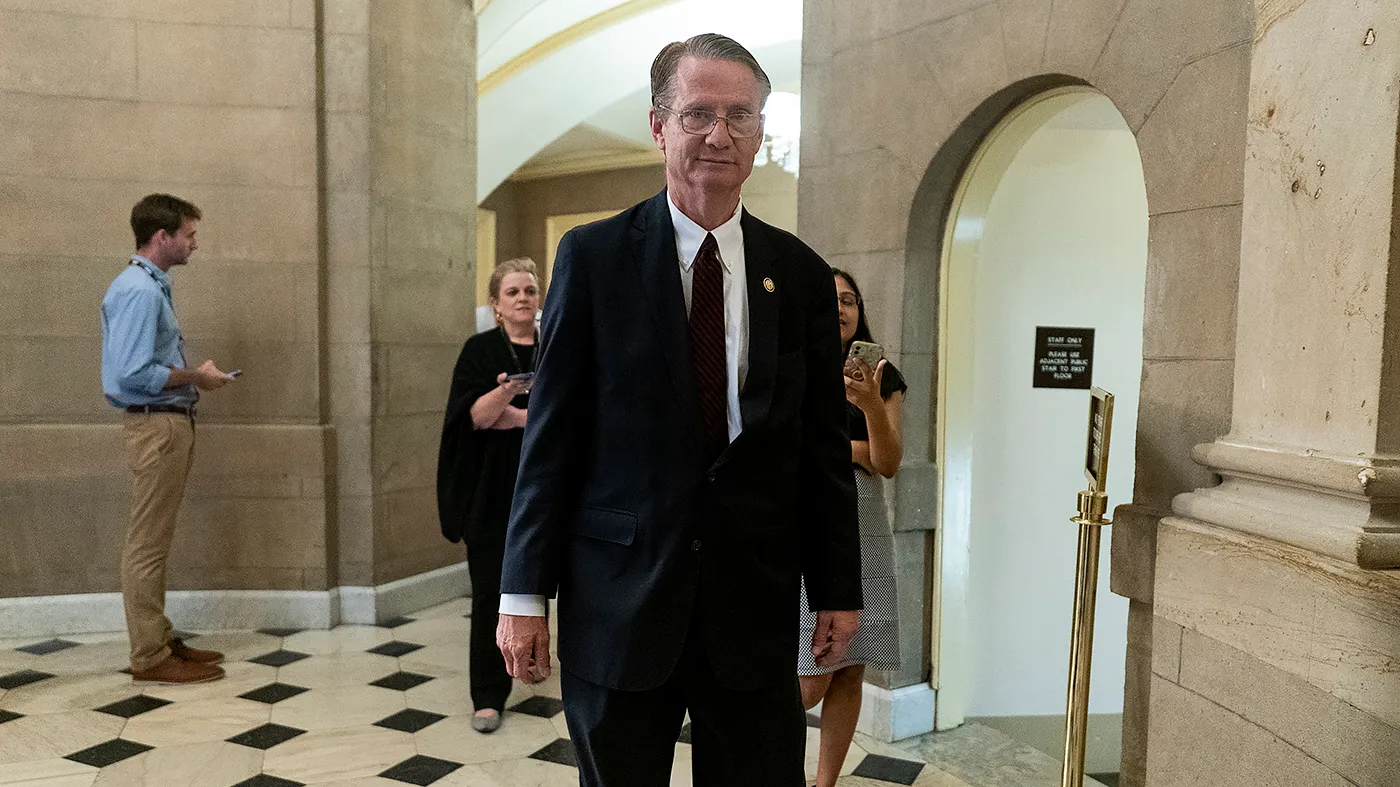India Holds Interest Rate Steady at 5.5% Amid Rising U.S. Tariff Pressure
India Holds Interest Rate Steady at 5.5% Amid Rising U.S. Tariff Pressure
By
David Goldfarb
Last updated:
August 6, 2025
First Published:
August 6, 2025
.webp)
Photo: Bloomberg.com
RBI Pauses Rate at 5.5% as U.S. Tariff Threats Loom and Global Trade Risks Persist
The Reserve Bank of India (RBI) kept its benchmark interest rate unchanged at 5.5% on Wednesday, a widely expected move following its aggressive 50 basis point rate cut in June. The decision, announced during the central bank's August monetary policy review, comes amid heightened tensions with the United States and continued volatility in global trade.
The decision aligns with forecasts from economists surveyed by Reuters, and reflects the central bank’s intent to pause and observe how global dynamics evolve before making further monetary policy moves.
RBI Maintains Neutral Stance Following June’s Big Rate Cut
In his policy briefing, RBI Governor Sanjay Malhotra stated that the Monetary Policy Committee (MPC) voted unanimously to hold rates. He explained that while geopolitical uncertainties have slightly eased, ongoing trade challenges—particularly those involving major global economies—continue to weigh on the outlook.
“We’re transitioning from an accommodative stance to a neutral one,” Malhotra said.
“This means we’ll let data guide us. We’ll reassess depending on how inflation, GDP, and global risk factors shift in the coming months.”
The RBI’s shift in tone signals that additional monetary stimulus is unlikely in the immediate term, unless there’s a marked downturn in economic indicators.
India-U.S. Tensions Cast a Shadow Over Economic Decisions
India’s latest policy move comes against the backdrop of growing diplomatic friction with the United States, following President Trump’s criticism of India’s continued purchase of Russian oil and military equipment. On Monday, Trump warned of potential tariff increases and punitive measures, although details remain vague.
This threat from Washington introduces additional uncertainty to India's trade environment, especially as India continues to diversify its strategic partnerships with countries like Russia and Iran.
Market Response and Currency Movement
Following the RBI’s announcement:
- The Nifty 50 index edged down 0.18%
- The Sensex also dipped slightly
- The Indian rupee strengthened modestly, trading at 87.72 against the U.S. dollar
Markets appeared largely unaffected by the decision, as the pause in rate movement had already been priced in by most investors.
Inflation at Six-Year Low, Growth Outpaces Expectations
India’s headline inflation rate for June dropped to 2.1%, its lowest level in six years—far below the RBI’s upper tolerance band of 6%. This development has given the central bank room to remain cautious, especially after the aggressive easing in June.
Meanwhile, the Indian economy continues to deliver stronger-than-expected growth:
- GDP grew by 7.4% year-on-year in Q4 FY2024-25, beating the 6.7% forecast by Reuters economists
- For the full fiscal year, GDP expanded by 6.5%, aligning with the government’s official estimate
The strong data suggests that the economy is holding up well despite external risks, though headwinds from trade tensions and global slowdowns remain.
What Analysts Are Saying
Bank of America analysts, in a July 28 note, said that the RBI’s June cut was a bold, front-loaded move—one that may have removed the need for further short-term interventions.
“The RBI took away the punchbowl early,” the note said.
“We don’t expect more rate actions unless there’s a major downside surprise in growth or a sudden tightening in global liquidity.”
That said, BofA didn’t rule out the possibility of another rate cut in Q4 2025, depending on how inflation and growth evolve by the year-end.
Looking Ahead: Data-Driven Approach in an Uncertain World
With global trade dynamics shifting—particularly with U.S. protectionist policies making a comeback—India’s central bank appears poised to tread cautiously. The RBI will likely wait for more clarity on external pressures, commodity prices, and domestic inflation before making its next move.
For now, the message is clear: policy will be driven by evidence, not emotion.
Popular articles
Subscribe to unlock premium content
Global Cultures and the Hidden Drivers of Productivity and Happiness

The Future of Personalized Medicine

Digital Nomads and the New Global Economy

Global Cultures and the Hidden Drivers of Productivity and Happiness

The Future of Personalized Medicine

Global Cultures and the Hidden Drivers of Productivity and Happiness









